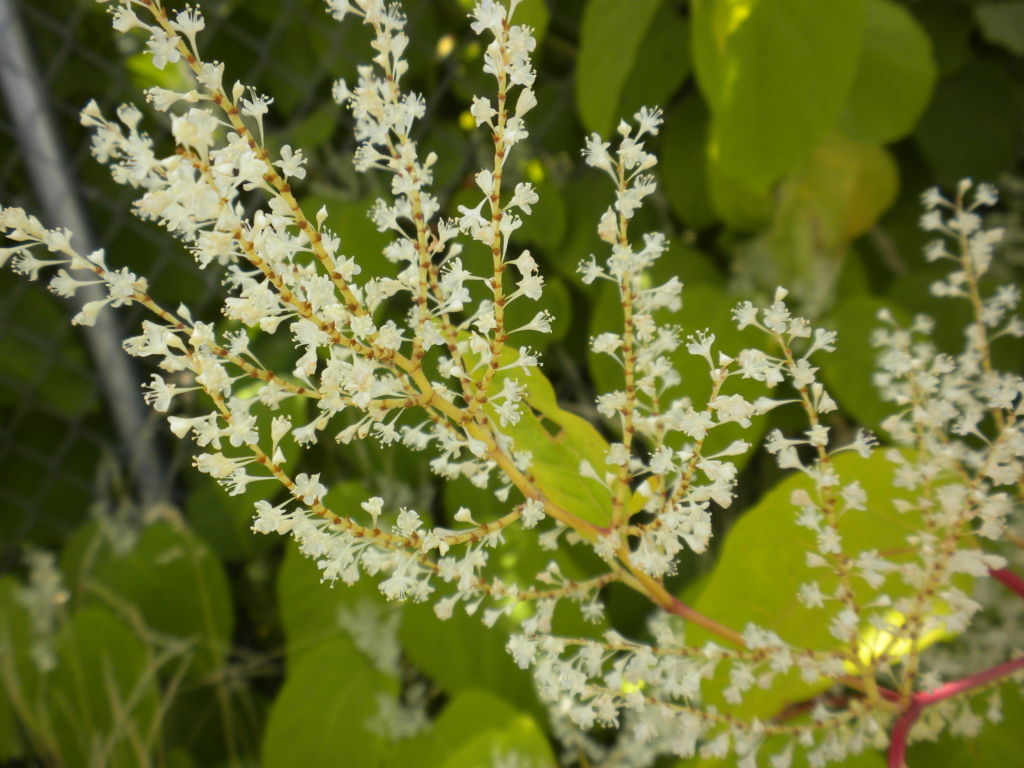Knotweeds
Fallopia/Polygonum spp.
Plant Description
Perennial with small green to white or pink flowers in drooping plume-like clusters from leaf axils, heart to spade shaped alternate leaves, hollow stems with nodes, and roots that grow 3-9 feet deep. Scientific names include: Fallopia japonica (Japanese knotweed), Fallopia x bohemica (Bohemian knotweed), Polygonum sachalinenses (Giant knotweed).
Plant Details
| Life Forms | |
|---|---|
| Habitats | |
| ODA Listing | |
| Soil and Moisture Conditions | |
| Suggested Actions | |
| Shade Preference | |
| Mature Height | 4-13' |
| Distribution | Found through out Oregon with greatest concentration in western part of the state. |
| Control | Mowing is not recommended. Contact your local watershed council, SWCD, or public works departments for assistance. |
| Disposal Methods | All plant parts should be disposed of in sealed plastic bags because small fragments can start new infestations. |
| Reproduction and Spread | Reproduce vegetatively via root, rhizome and stem fragments. Also in yards, vacant lots, park and field edges and other places. |
| Introduced | Brought to North Maerica from Asia as an ornamental in the 1890s. |
| Look Alikes | bamboo, other knotweeds |
| Impact | Displaces native vegetation due to its aggressive growth. Creates bank erosion problems and is considered a potential flood hazard. Lowers quality of riparian habitat for fish and wildlife. Forms dense stands that crowd out all other vegetation, degrading native plant and animal habitat. Extremely vigorous rhizomes form deep, dense mat. Plants resprout from stem or root fragments creating new infestations downstream. |
| More Info |
© Marion Soil and Water Conservation District. All Rights Reserved.



